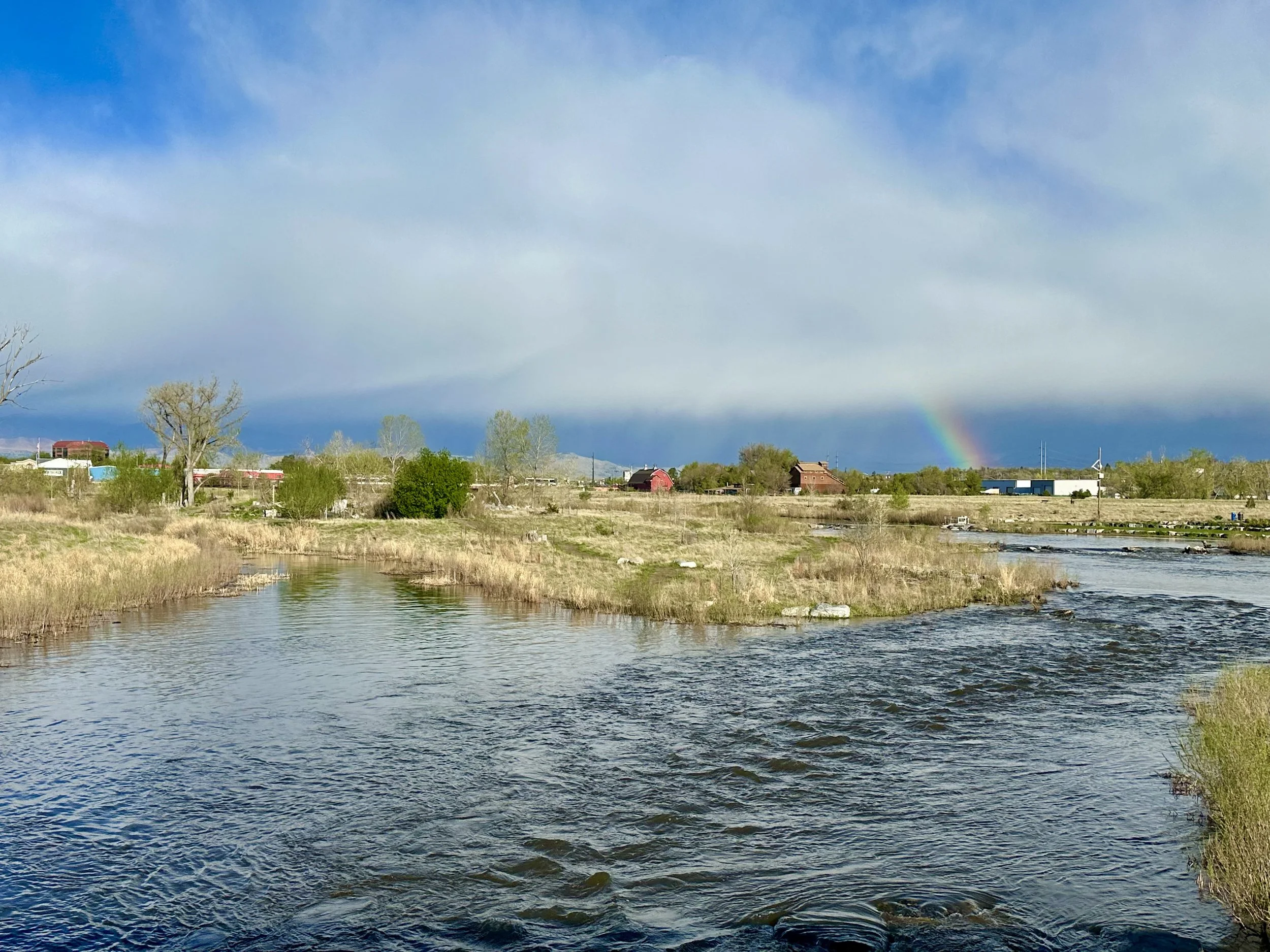Preparing Longmont for a Safe, Resilient Future
Longmont faces expected and unexpected economic, environmental, and social challenges, and preparing now is not only necessary, but financially responsible. Unprecedented environmental events, economic volatility, federal uncertainty and funding cuts, and state budget constraints will only squeeze communities like Longmont even further. Now is the time to plan responsibly and further invest in our public utilities and services. Not in 5 years, not in 10 years. These risks threaten our health, safety, and quality of life. Longmont knows these risks already, and we have to plan for and invest in resilient infrastructure now.
That’s why Matthew will fight to ensure Longmont is as resilient as possible by planning for extreme weather, embracing community-oriented public safety strategies, planning ahead for the Sundance Film Festival, and investing in a modern Vance Brand Airport. Here’s how we do this:
-
When economic, environmental, and social challenges arise, uncertainty and instability can directly endanger the health and safety of residents and workers. Economic and environmental stress impacts mental health and crime. Although 97% of Longmont residents said in the community survey that they feel safe during the day, only 87% said they feel safe at night. Here’s how we can make our community safer:
Expand Co-Response Services & Restorative Justice Programs: Increase resources for our co-response public safety teams (also known as CORE)—comprised of a paramedic, mental health clinician, and police officer to ensure Longmont has both the personnel and tools to manage a range of social crises and health emergencies. Co-response programs and restorative justice programs like R.E.W.i.N.D. keep our residents and police officers safer by proactively assessing safety threats, responding with the appropriate tools for complex situations, and diverting people from the criminal justice system to more appropriate support. This starts by hiring more officers and clinicians, expanding the co-response toolkit, and supporting our own officers’ growth in co-response training. This will continue to enable Longmont to lead in innovative co-response and restorative justice programs.
Innovate with Transitional Housing: Explore ‘tiny home’ village opportunities for transitional and supportive housing to help residents who are homeless have more stable, healthier, and safer lives. As your city councilmember, I will continue learning from and collaborating with local partners like Veterans Community Project, Habitat for Humanity, HOPE, and Our Center.
Address Health and Safety Violations at the Sugar Mill: Protect Longmont’s public health by enforcing code violations and other illegal activities at problematic sites like the Sugar Mill, by either annexing the Sugar Mill or pressuring Boulder County to enforce health and safety violations.
Compassion is a key ingredient in making our community safer. The Kanemoto Park Tower of Compassion is a symbol of gratitude for the compassion and protection Longmont offered to the Kanemoto family when Japanese Americans faced internment during the 1940s. This offers lessons for us today. We can and must continue to stand up for the rights of all Americans, especially when federal authorities are threatening our neighbors with intimidation tactics and unconstitutional searches.
-
Longmont knows the effects of extreme weather and climate change. We have direct experience living through and recovering from floods, fires, and extreme heat waves. Matthew’s entire professional career has been dedicated to helping cities cost-effectively invest in renewable energy, work with their utilities, and embrace sustainable community development. As the city continues the Resilient St. Vrain project, there’s more we can do to live more resilient, more comfortable, and safer lives:
Complete the Resilient St. Vrain Project: Removing downtown Longmont from the floodplain makes us more resilient to future flooding, reduces flood insurance costs, and enables us to reinvest in more downtown properties. While this is already underway, Matthew will ensure this continues to be a budget and operational priority for Longmont. The threats posed by flooding remain until we complete this project, and resilience is instrumental in both how we manage our growth and support a more affordable, more prosperous Longmont.
Include Wildfire Risks in Future Planning: When Envision Longmont - our city’s comprehensive plan - was approved in 2016, it made sense that flood resiliency was top of mind. While we still need to reduce flood risks, wildfire risks need to be integrated fully into updates to Envision Longmont, our building code, electric grid, and the Boulder County Fairgrounds - which serves as a regional emergency shelter.
Enhance Red Flag Alerts: Ensure all of Longmont is prepared and informed for extreme weather events, including red flag wind, fire, and emergency alerts for all electric customers in English and Spanish.
Help Residents Stay Cool During Heat Waves: Expand city efforts to provide temporary and permanent cooling assistance to reduce health risks from extreme heat for people and animals.
Invest in Local Efficiency & Renewable Energy: Double down on investments in energy efficiency and local renewable energy technologies that reduce air pollution for our community, minimize rate shocks, and increase grid flexibility.
Embrace EVs for Healthier Air: Expand Longmont’s electric vehicle charging network to reduce local air pollution (including smog) and help residents adopt vehicles that are not susceptible to volatile fuel prices.
-
Our airport lacks a sustainable financial model and has outdated infrastructure and services. This impacts quality of life for residents (including pilots), our environment, and our economic potential. With Sundance coming, this is also the time to ensure this is a modern gateway to Longmont - a part of our community not just a facility in our community. Here’s how we can make it a better economic and community asset:
Reimagine the Airport as a Community Amenity for Pilots and Non-Pilots Alike: Modern general aviation airports have restaurants, lounges, and meeting spaces that are destinations in their own right. At the same time, many in the community want another recreation center, library expansion, and other community gathering spaces. These are not mutually exclusive and would integrate the airport and other community facilities to serve all of Longmont.
Ensure Communications on Safety and Quality of Life are Effective: Upon seeing gaps in how our airport communicates both our voluntary noise abatement program and safety alerts for pilots and the public, Matthew kickstarted efforts to make the City’s communication effort more effective. This has already prompted the City to draft an airport emergency plan, which had not previously existed. But more focus is needed to ensure our airport is proactive and responsive for aviation safety concerns and effective in implementing our voluntary noise abatement program.
Embrace Electric Aviation & Unleaded Fuels: Support the rapid innovation in cleaner and quieter electric aviation by prioritizing investments in electric upgrades with Longmont Power & Communications and collaborating with other Front Range airports on coordinated deployment of compatible charging infrastructure. Owning and operating our own electric utility is a huge asset here. If you build it, they will come. We also need to aggressively pursue grants and FAA support for unleaded fuels, which is already an FAA stated priority by 2030.
Refocus Vance Brand Airport as a Local Gateway and Innovation Hub: Our airport master plan and airport infrastructure is vastly outdated. We need a new fixed-based operator (FBO) that is a modern gateway for Longmont. We also need to invest in infrastructure that enables sustainable and electric aviation innovation and enhances quality of life in our community. We run our own electric utility and Nextlight and have local opportunities with the St. Vrain Innovation Center. This is in our wheelhouse and merits intentional focus.
Diversify Financial Revenue Sources: Aggressively pursue grant funding and other revenue sources that don’t disproportionately burden Longmont-based pilots so we can invest in modern airport facilities that our pilots deserve and make visitors feel welcome. Attracting aviation innovators will also bring private sector investment directly to our airport too.
-
The Sundance Film Festival is coming to Boulder in early 2027! While not in Longmont, the festival will be an exciting addition to our region - but it will also bring complications that come with adding 80,000-100,000 people to our region for a concentrated period of time. This will impact our traffic, transportation, lodging, public safety, and economy. To prepare for this unique and exciting opportunity, Matthew will create a Sundance Task Force to ensure city departments are working cohesively with local organizations like the Longmont Economic Development Partnership, Chamber of Commerce, Longmont Downtown Development Authority, Visit Longmont, RTD, and others in the region. This will enable Longmont to benefit from the festival, plan ahead for challenges, and not let Sundance ‘happen’ to us.




